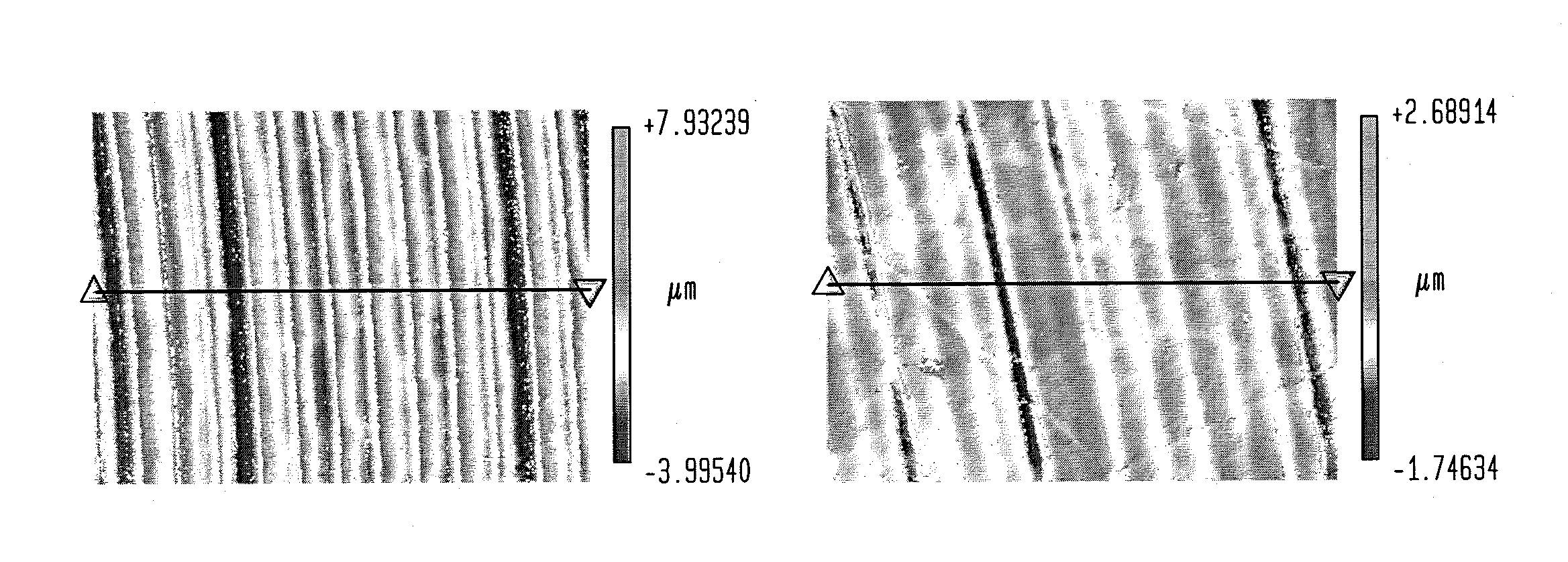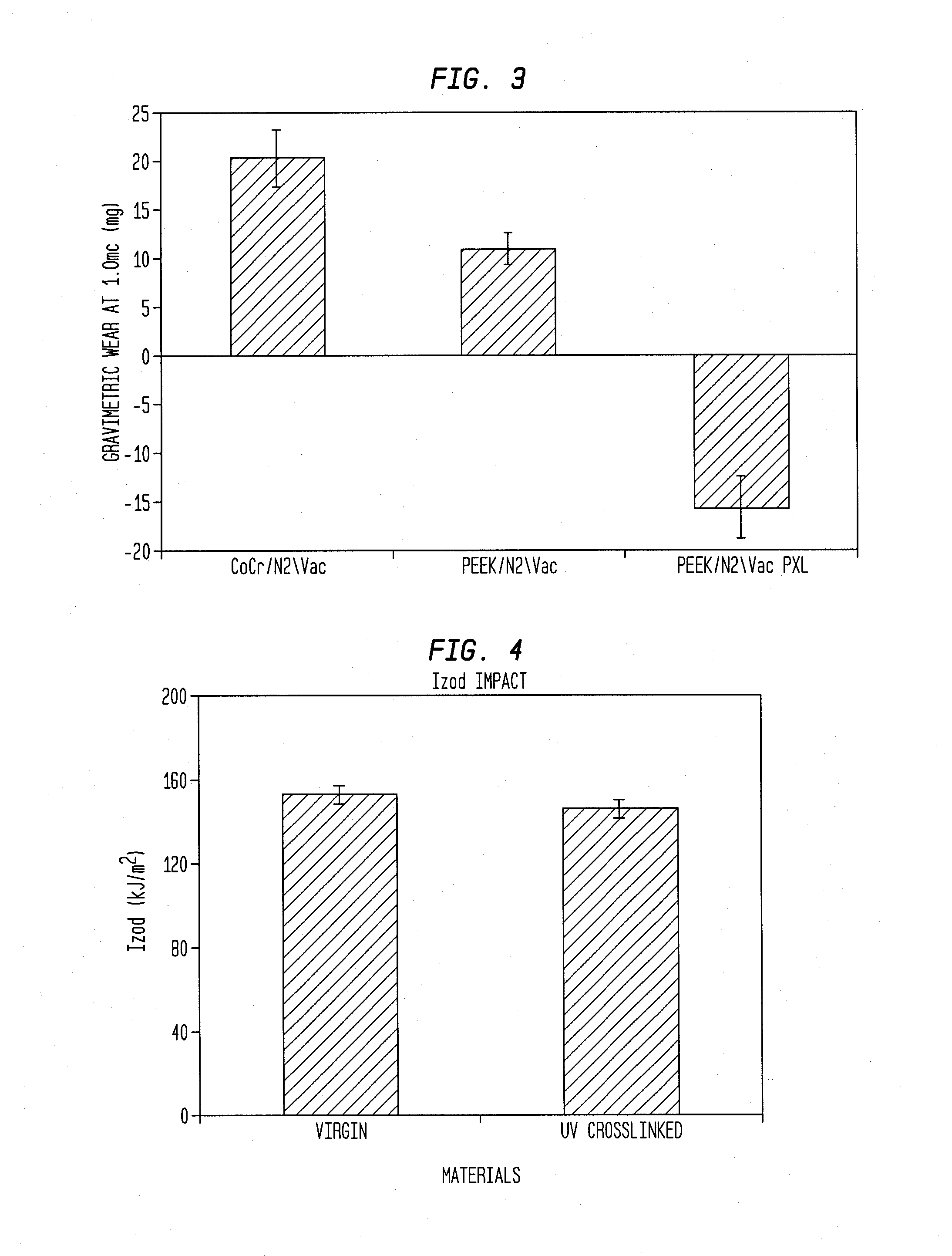Surface crosslinked polyethylene
a crosslinked polyethylene and surface technology, applied in the field of medical implants, can solve the problems of introducing microscopic wear particles into the surrounding tissues, reducing the wear rate, so as to achieve the effect of maximum wear resistance and low cos
- Summary
- Abstract
- Description
- Claims
- Application Information
AI Technical Summary
Benefits of technology
Problems solved by technology
Method used
Image
Examples
example 1
[0043]Commercially available polyethylene acetabular cups (N2Vac according to the process of Stryker U.S. Pat. No. 5,414,049), or Virgin GUR 1020 UHMWPE which was sequentially crosslinked three times per Stryker U.S. Pat. No. 7,517,919 and obtained from Stryker orthopaedics) were used. The UV light with a wavelength of 350 nm was used as a light source. Benzophenone from Aldrich was used as a photoinitiator.
[0044]The UV crosslinking process is described below. Several already bulk crosslinked UHMWPE acetabular cups were immersed in an acetone solution of benzophenone. After one minute, each cup was taken out from the solution and dried under vacuum for an hour. The cups were immersed in deionized water in a glass jar that was purged with an inert gas (nitrogen) to produced oxygen free water. The glass jar was sealed and placed in a water bath at 65° C. Each cup was then irradiated by the UV light for up to 2 hours. After photoirradiation (which produces photocrosslinking (PXL)), eac...
PUM
| Property | Measurement | Unit |
|---|---|---|
| depth | aaaaa | aaaaa |
| depth | aaaaa | aaaaa |
| temperature | aaaaa | aaaaa |
Abstract
Description
Claims
Application Information
 Login to View More
Login to View More - R&D
- Intellectual Property
- Life Sciences
- Materials
- Tech Scout
- Unparalleled Data Quality
- Higher Quality Content
- 60% Fewer Hallucinations
Browse by: Latest US Patents, China's latest patents, Technical Efficacy Thesaurus, Application Domain, Technology Topic, Popular Technical Reports.
© 2025 PatSnap. All rights reserved.Legal|Privacy policy|Modern Slavery Act Transparency Statement|Sitemap|About US| Contact US: help@patsnap.com



